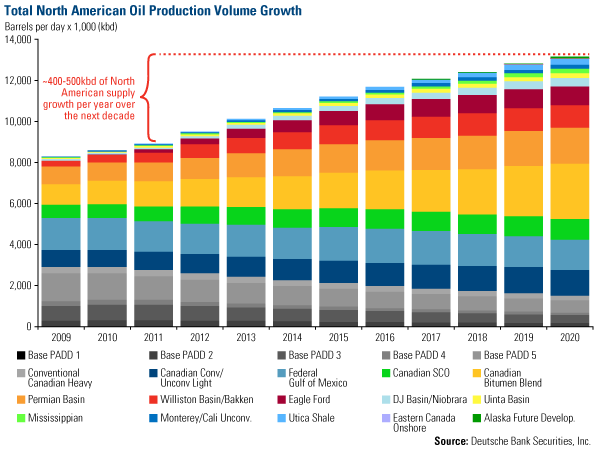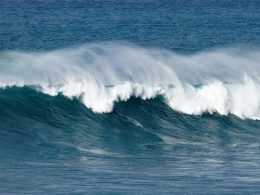Energy and Natural Resources Market Radar (March 4, 2012)

Strengths
- The Global Resources Fund had a relatively good week, driven by strong performance in Colombian oil and gas exploration companies, silver mining stocks, and U.S. midstream master limited partnerships.
- Crude oil prices hit a 43-month high after reports that a pipeline exploded in Saudi Arabia, the world's biggest oil producer. Brent crude jumped $5.74 to $128.40 per barrel in New York on Thursday, the highest since July 2008. Crude was higher also because sanctions on Iran are disrupting its oil exports and further restrictions could tighten global oil markets already hit by a rash of outages in other countries, according to a report required by a recent U.S. sanctions law.
- Aluminum producers supplying the Japanese market have secured an increase in premiums to $115-117/t CIF in the second quarter, from $112-113 per ton in the first quarter of 2012, supported by rising demand from automotive manufacturers and construction activity that is contributing to a tighter balance in the local market. Elsewhere in the world, aluminum spot premiums have been rising strongly since the start of this year as a result of ongoing warehousing activities.
- Copper traders are bullish for a fourth consecutive week, the longest streak since October, as manufacturing strengthens from China to the U.S. and stockpiles declined to the lowest in more than two years. Thirteen of 29 analysts surveyed by Bloomberg expect the metal to gain next week and six were neutral. Inventories tracked by the London Metal Exchange fell to 292,250 metric tons yesterday, the lowest since August 2009, and orders to withdraw more metal are close to an eight-year high, bourse data show.
- According to an official in the U.S. Department of Energy, the department will not attempt to control natural gas prices by revoking approvals granted for gas export terminals, as lawmakers and environmental groups stepped up their attacks on attempts to send U.S. gas abroad.
Weaknesses
- Mozambique’s government has rejected an environmental plan submitted by Riversdale (now Rio Tinto owned) to barge 2 million tons per annum of coal down the Zambezi River to Beira port, citing potential flooding issues as a result of dredging. This makes development of alternative rail routes (such as to Nacala port) crucial in expanding export tonnages by the middle of the decade.
- Mexico oil production is seen stagnating at approximately 2.8 mm barrels per day over the next 14 years unless the state oil company Pemex significantly boosts investment, according to the energy ministry.
- Bloomberg reported that Libya’s oil minister said that oil refineries are operating at 43 percent of their capacity, or about 172,000 barrels a day, after an armed conflict last year halted operations. Refinery utilization, however, will rise in the North African nation when the Ras Lanuf plant comes back online in early April. The country, which holds Africa’s biggest crude reserves, is boosting oil production and restoring its refineries after months of fighting last year to oust the nation’s former leader.
- With his re-election fate increasingly tied to the price Americans are paying at the gas pump, President Obama asked Congress on Thursday to end $4 billion in subsidies for oil and gas companies and vowed to tackle the country’s long-term energy issues while shunning “phony election-year promises about lower gas prices.”
- The effect of the shale gas boom has again been highlighted in U.S. coal data, with the EIA inventory report showing utility holdings up year-over-year for the first time since early 2010. Inventory levels were 175.1 million short tons, up 6.75 million short tons month-over-month, reflecting the 21 percent year-over-year decline in coal generation over the month.
- The current daily crude steel production rate is 1.7 million tons, implying annualized production of 620 million tons, far below the 683 million tons production realized in 2011. January China total steel production was 52.1mt, -13 percent year-over-year. January global steel production was 117mt, -7.8 percent year-over-year. If demand remains weak for the rest of the year, steel production volume may be under great pressure.
Opportunities
- In the latest edition of Scotiabank's Commodity Price Index, economist Patricia Mohr observed, "Significant industry growth in potash, coking coal, gold and nickel – as well as the inclusion of iron ore – has boosted the weight of metals and minerals within the index." The trade weight of metals and mineral in the index has risen slightly from 26.8 percent to 30.1 percent, "partly due to the inclusion of the rapidly expanding iron ore trade from Labrador/northern Quebec to China as well as Europe," Mohr said.
- Macquarie Research highlighted that PMI data for February released on Thursday reinforced the recent macro pattern; key economies are getting better at the margin, though in tentative steps rather than leaps. In particular, the Chinese economy showed further signs of stability and expectation of increased orders, very much in line with the results of the Macquarie China Steel Sector survey. Macquarie analysts see the second quarter likely to exhibit both China and ex-Chinese demand improving, a more positive environment for pricing once accessible inventory levels are reduced from those seen presently.
- One of the key developments causing consternation on the supply-side of base metal markets early in 2012 has been the evolving threat of a ban by the Indonesian government on unprocessed ores. While originally signaled back in the 2009 mining law, widespread skepticism in the intervening period concerning the likelihood of its application was filliped by the announcement in early February that the 2014 ban had officially been signed into law. While important for both copper and bauxite, nickel offers the most intriguing potential effect; Indonesian ore makes up 15 percent of global mine output versus domestic refined output representing just 1 percent. The implication is that unless processing capacity increases, there will potentially be significant amounts of ore “trapped” in the country. Moreover, Indonesian ore provides more than 50 percent of Chinese nickel pig iron sector feed, meaning genuine production constraints there would significantly impact domestic austenitic stainless steel producers nickel input choices.
- The world’s top copper exporter, Chile, mined 396,341 tonnes of copper in January, down 7.6 percent year-over-year, the INE statistics agency said on Wednesday. January's copper output was also 22 percent below December's 509,407 tonnes of copper production reported last month by the government. The drop in monthly production is the lowest level since July last year, when Chile's output was impacted by strike action at Escondida, and comes alongside an expected drop in Grasberg output due to strike action this quarter. We may see upward pressure on the cost of copper because of this decrease in production.
- Reuters reported that India needs about 140 million tons of coal imports in 2012-13. This is about 25 percent higher than the country’s expected coal imports for the year ending March 31. Coking coal is expected to constitute 15 percent of the total coal imports for the period.
- Lithuania is planning a tender in March to issue its first license to explore for shale gas with exploration results seen from 2014, according to the head of the State Geological Service.
Threats
- Operation costs are becoming increasingly difficult to manage for precious and base metal producers, with the FTSE 100 copper miner, Kazakhmys, posting a flat core profit for 2011, offset by an 18 percent increase in production costs. Companies seem to be using dividends as a means to attract investors, and with the company following suit, it issued a 27 percent dividend rise.
- Bloomberg reports China Mining Association (CMA) estimates that China iron ore imports may decline up to 14 percent. Total import volume may range between 590 million tons to 650 million tons, lower than the 686 million imported in 2011.
- E&P companies are seeing service (i.e., pressure pumping) prices down about 20 percent since early 2011 fourth quarter in East Texas. There is some discussion that West Texas has too many frac companies and will see price weakness in 2012.












